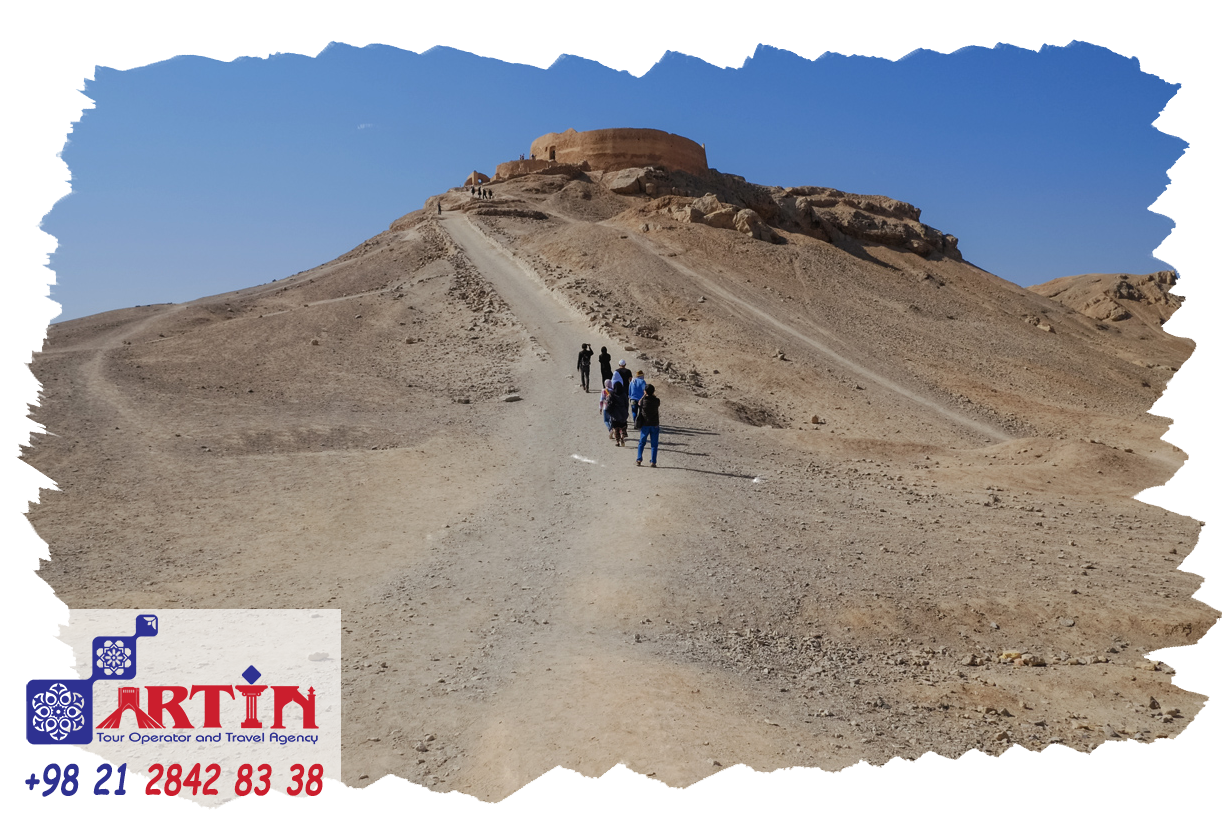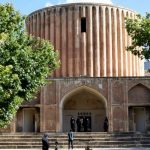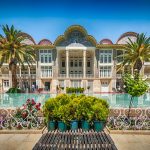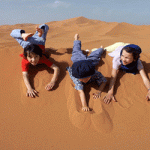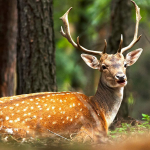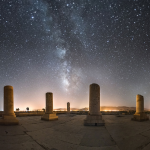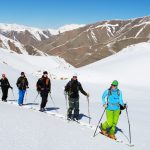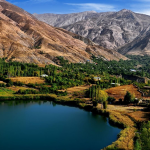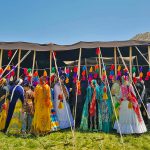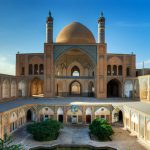Iran desertification is considered high! Traveling to the Iran desert regions will be one of the most exciting and at the same time the most mysterious nature trips.
Iranian deserts
Iranian deserts, such as dasht-e kavir, kavir-e lut, kavir-e mesr and … are so popular among Iran travelers These days, especially it has become increasingly popular among naturalists. These beautiful yet exciting areas attract any tourist to visit in the appropriate seasons of autumn and winter. The camel experience, the sightseeing of historic caravansaries, Iran desert towers, Iran desert ghost towers, Iran Yazd desert, towns in the desert, Aphrodite on unique flames, watching the desert night sky and so on will encourage anyone to travel to an Iran desert. That is why traveling to the desert will be much different than traveling to other natural places. But to travel to the desert you need to take into account the safety of these beautiful areas and consider booking hotels in the desert of Iran through the Iran desert tourism industry. You should also consider the weather.
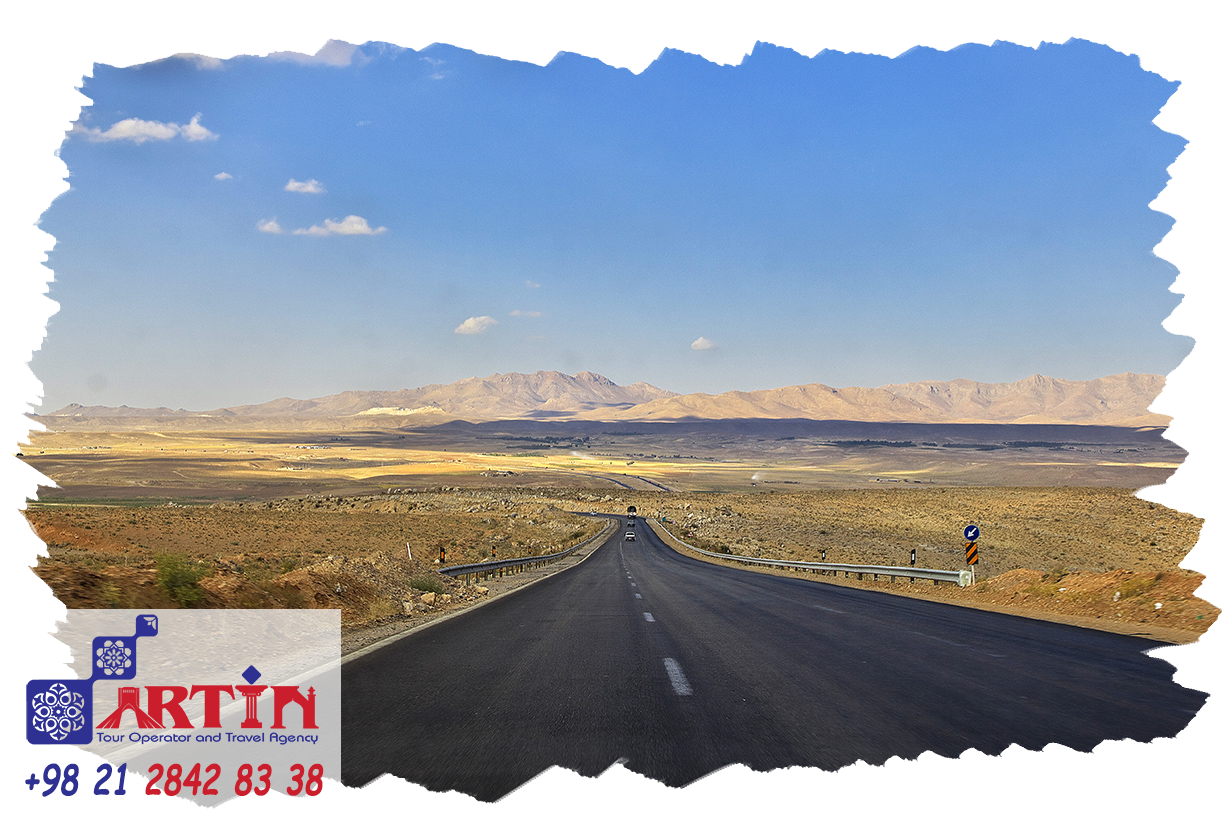
The hottest place on the earth (ground)!
World’s highest temperatures recorded on the ground: meet the Deserts of IRAN. Sunrise and sunset in the desert, the starry sky and the silence of the desert, sand mosaics, salt crystals, and imaginary cities are among the attractions of the deserts of Iran. Iran desert names are spectacular! “kavir” means desert in the Persian language.
| Don’t know which tour to choose | Set your 30 min personal travel advisory meeting! |
• Dasht-e Kavir
Nearly a quarter of Iran’s vast country is made up of desert regions, which makes it a popular country for Iran desert trekking. In the meantime, Dashte Kavir and Dashte Lut are more popular Iran desert among the people and cover a total area of about 5,000 kilometers.
Dasht-e kavir Iran desert is located in the center of the Iranian plateau and from north to central and eastern Alborz slopes and from west to Damghan to Jandagh and Riggen desert, from east to mountains of Uzbekistan and from south to Khor-Tabas communication axis. This Iran desert is more than 2 kilometers long and about 4 kilometers wide. The Iran desert temperature in the region reaches over 50 degrees Celsius in summer, and the Iran desert temperature difference between day and night is found to be 70 degrees Celsius. Over time, the salt layer beneath Lake Byrne was buried under layers of mud. But as the salt density is lower than that of rock and mud, it gradually pushed into its higher layers, eventually penetrating sediments over millions of years, creating interesting salt domes on the surface. The salt dunes of this Iran Desert are some of the best-known examples of this geological phenomenon around the world, with around 5 salt nodes found throughout the area, some of which are subject to wind and rain erosion.

• Kavir-e Lut
Kavir-e Lut is The first vast Iran desert plain in southeastern Iran, which is a popular destination on a desert trip and it is including one of the warmest and arid deserts in the world, spread across three provinces of South Khorasan, Sistan and Baluchistan, and Kerman in Iran. This Iran desert covers about 10 percent of Iran’s territory. The Lut Desert was measured as the hottest spot in the Earth’s thermal poles in 2005, 2006, 2007 and 2009, and in 2005 reached a record of the warmest global and Iran desert temperature on Earth at temperatures above 70 ° C. submitted.
The world’s tallest sand dunes and nebkas (a phenomenon caused by the interaction of wind erosion and sandstone vegetation with crown vegetation), huge erosive ditches, hydrological networks, tectonic pits, salt-poor phenomena And the vast Rigi Plains (Hamada), aqueducts, landscapes and historic villages, ancient civilization settlements on the margins and so on are the best tourist attractions of kavir-e lut, this beautiful, hot and popular Iran desert!
The Lut Desert is the hottest spot on Earth, according to Austrian scientist Stratil Sauer. This Iran Desert can be the “thermal pole of the earth!” So one of the most important attractions of the Lut Desert is that it is the hottest spot on earth. Exploring this desert for anyone can be very interesting.
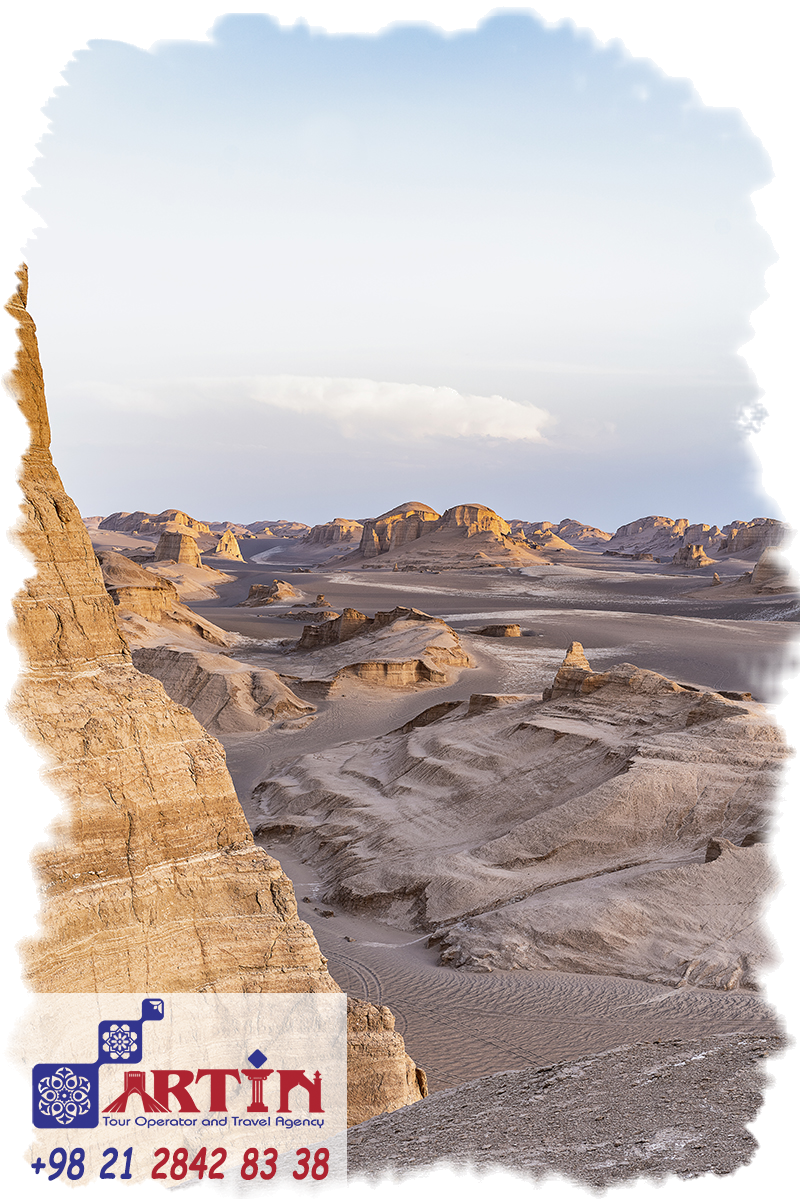
• What else to see in the desert or nearby places
–Shahdad
Shahdad, the treasure that lies in Lut
Amidst the beauties of the Loot Desert, which is a treasure trove of many, there is another Iran desert treasure that perhaps its heirs may not know themselves to possess! The Shahdad region and its climates are among the hottest in the world. The heat in this Iran desert is such that animal carcasses do not decompose because the sun’s power is so high that the carcass is dried before it is decomposed by bacteria.
-Maranjab desert
The Maranjab Desert is one of the most popular Iran desert attractions in Isfahan province. This beautiful Iran desert has a short distance from Tehran and it is close to Aran and Bidgol. Attractions of nature and tourism can be found in the sand dunes and hills, Abbey caravan and wandering island. This Iran desert is also one of the sky observatories and is a good destination for star-gazing or Astro-tourism.
– Mesr desert
The Mesr (Egyptian) desert derives its name from a simple and lovely village of the same name. This Iran desert is located in Isfahan province, 2 km from the city of Khor, near the village of Garmah. In addition to the soft sand dunes that are the main attractions of the desert, other attractions of this beautiful Iran desert such as Abbasid, Tal Salan, Nakestan, and the Egyptian countryside can be mentioned.
| Don’t know which tour to choose | Set your 30 min personal travel advisory meeting! |
The Journey begins
You might ask, where to land to be in the nearest place to deserts? If you are planning to go to the safari, Isfahan is a better choice to land. However, the typical way for traveling to loot desert is to travel to Kerman airport with an Iran air flight after arriving at Tehran (capital) through Imam Khomeini international airport. After staying for a night at Kerman, the journey to shahdad will begin the morning after.
On the other hand, the best way to travel to dasht-e kavir is traveling to Isfahan international airport from Tehran and then travel to the desert with artin travel tours from there. Also from Isfahan, you can access kavir-e mesr or mesr desert, which is a small village in the city of Khor and Biabank in Isfahan province. The village is found in the desert of Iran, 45 km east of Jandagh. The geographical location of the Egyptian Desert is 34.04 North and 54.47 East and you can reach Nain and Isfahan in the middle of Damghan Road.
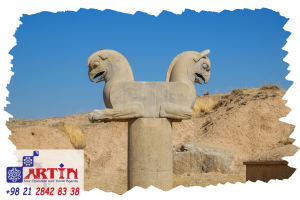
The must-see desert cities
Below, we will introduce the best cities and villages to visit when traveling to Iran deserts, based on Iran desert map:
Some cities and villages to visit near Iran’s main deserts include:
• Damghan
Damghan is an ancient city located at about 2 km northeast of Tehran in Semnan province on Iran desert map. It is the oldest and most ancient “parth civilization” city in Iran, formed along the Cheshmeh Ali River and was the first Parthian capital in Iran during the Parthian Empire. The old name was “sad darvaze” (hundred gates) and has many ancient monuments.
• Aran-o Bidgol
Aran and Bidgol is a city in the north of Isfahan province. It runs from Kashan to the south, Abuzidabad to the east, Noshabad to the west, and Iran’s central desert to the north and the Salt Lake. You can access this beautiful city both by traveling from Tehran to Isfahan by plane or traveling from Tehran to Kashan by bus. The distance from Aran-o Bidgol to Kashan is about 13 km. When you reach the dirt road between the two cities, you can reach Aran-o Bidgol from Kashan in 20 minutes.
• Abyaneh
Abyaneh is a dry and remote village in the central part of the city of Natanz in Isfahan province on the Iran desert map. The village is about 5 kilometers northwest of Natanz, on the hillside of karkas mountain. This village is one of the tallest residential areas in Iran. Elevation in this village is 2222 meters! Due to its indigenous architecture and its diverse monuments, it is one of the famous villages of Iran. Abyaneh’s climate is warm and dry. You can access this city by traveling from Tehran to Isfahan by plane.
• salt Lake
Salt Lake or “daryache namak” is the name of a lake in the central desert region of Iran at Iran desert map. The lake is located between the three provinces of Isfahan, Qom, and Semnan. It is located 2 kilometers southeast of Tehran, 2 kilometers east of Qom and 2 kilometers northeast of Aran-o Bidgol. About 3 kilometers to the lake and to the south is a spectacular island called Wander Island or “jazire sargardan”. It is composed of porous volcanic rocks. The salt lake scenery of the island tall is attractive to any visitor.
Read Other Posts – Learn More
Decide to VISIT IRAN
The time which you may need to cover
If you don’t have a business or a job you need to attend at the time, the complete journey to Iran deserts (including all the attractions we mentioned above and even more!) takes at least 7 to 8 days. a one-week trip is needed only to cover visiting the deserts of Iran to see their magnificent attractions and sights. The best time to travel to the desert in spring and autumn, as the desert heat in the summer will be extremely overwhelming and in winter it is extremely cold and dry. It is also advisable to avoid desert climbing during the noon due to high heat and to circulate in the sand before sunset and visit Iran deserts at the end of the day, because of the Iran desert temperature fluctuation during the day and night. Check the Iran desert map before the travel!
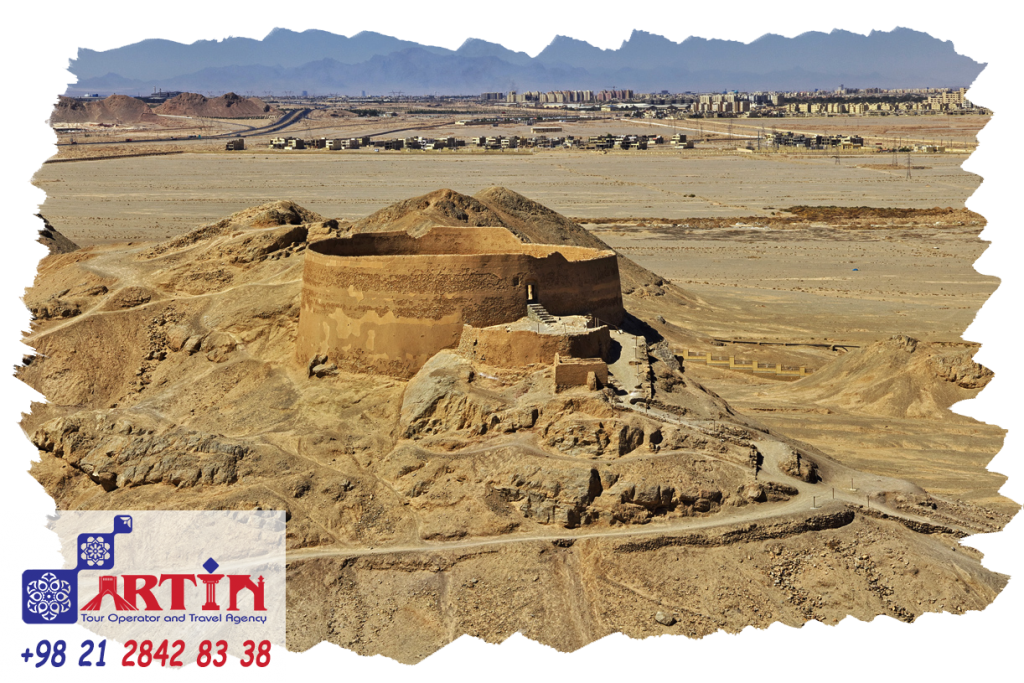
Temperature, Climate, and Camping facilities
In general, Iran deserts have a warm and dry climate. But these places are a bit different in the fall and winter seasons. During these seasons, the climate is mild during the day and cools during the night. That is why many tourists believe that the best time to travel to an Iran desert is in the second half of the year. Iran desert climate is somewhat mild in the autumn and winter, and at night the desert climate is slightly cold. For this reason, many tourists choose this season to travel to an Iran Desert. Apart from the winter snake, scorpion and tarantula are no danger to you because they are in so-called “winter sleep”. Autumn and winter are the best-selling seasons of desert tourism.
Iran desert weather at the fall is in such a condition that even wearing a T-shirt is enough for you, of course, you will need a jacket for the day and night, most of the tours usually light a fire at night and you will spend the night at the desert near the warmth of the fire. It’s fun and will leave you with a happy memory that you will never forget. Desert weather is very hot and intolerable in summer and snake, scorpion, tarantula, etc are out this season and you will be in danger if you travel barefoot. So, if you are planning to travel to an Iran desert at this season, be very careful and travel with a person familiar with Iran desert or a tour guide via Iran desert tours and also check Iran desert maps through the travel. Also, be aware of the storms in Iran deserts and consider Iran desert temperatures during different seasons of the year.
Follow us on instagram


